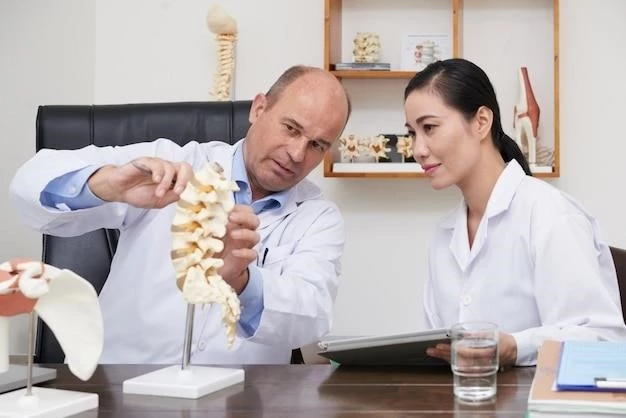Overview of Pagets Disease of Bone
Pagets disease of bone (commonly known as Pagets disease) involves cellular remodeling and deformity of one or more bones. The condition causes excessive bone breakdown and disorganized new bone formation, resulting in weakened and deformed bones. Pagets disease can lead to various symptoms such as bone pain, fractures, and arthritis. Management of this chronic bone disorder typically includes medications and, in some cases, surgical interventions. Seeking early diagnosis and treatment is crucial for managing the disease effectively.
Pagets disease of bone is a chronic condition characterized by excessive and disordered bone turnover. This results in weakened, enlarged, and structurally abnormal bones. The disease primarily affects older individuals and can lead to symptoms such as bone pain, deformities, fractures, and arthritis. The exact cause of Pagets disease is not fully understood, but it involves an imbalance in bone remodeling processes, leading to abnormal new bone formation. Seeking prompt medical attention and appropriate management are crucial in addressing the impact of this condition on skeletal health.
Definition and Description

Pagets disease of bone involves cellular remodeling and deformity, causing weakened and enlarged bones. It results from dysregulated bone turnover with excessive breakdown and disorganized new bone formation, leading to structural abnormalities. The condition primarily affects older individuals and can manifest as bone pain, fractures, and arthritis. Seeking early diagnosis and appropriate management is essential to address the impact on skeletal health.
Genetic Mutations and Nuclear Factor kappa-B Activity
In about 10% of Pagets disease cases٫ genetic mutations in the SQSTM1 gene lead to increased nuclear factor kappa-B activity. This activity enhances osteoclast function٫ contributing to the accelerated bone resorption characteristic of the disease. Understanding these genetic factors is crucial for personalized treatment approaches and management strategies.
Pagets disease of bone involves abnormal turnover and replacement of bone tissue, leading to areas of enlarged and softened bones. This condition results in weakened bones that are more susceptible to fractures and deformities. The accelerated bone turnover process contributes to the structural abnormalities observed in Pagets disease, highlighting the importance of early diagnosis and appropriate management to prevent complications.
Bone Pain, Deformity, and Arthritis
Pagets disease of bone may present with bone pain, deformities, and arthritis, impacting skeletal health. Early detection and management are key to addressing these symptoms effectively.
Accelerated Bone Turnover and Matrix Replacement
Pagets disease of bone involves abnormal turnover and replacement of bone tissue, leading to areas of enlarged and softened bones. This condition results in weakened bones that are more susceptible to fractures and deformities. The accelerated bone turnover process contributes to the structural abnormalities observed in Pagets disease, highlighting the importance of early diagnosis and appropriate management to prevent complications.
Complications⁚ Fractures and Neurological Symptoms
Pagets disease of bone can lead to complications such as fractures and neurological symptoms. The weakened and deformed bones associated with this condition can increase the risk of fractures. Additionally, nerve compression due to bone changes can result in neurological symptoms like tingling, numbness, or weakness in the affected areas. Prompt diagnosis and appropriate management are essential to address these complications effectively.
Diagnosing Pagets disease often involves imaging techniques such as X-rays and MRI scans. X-rays can reveal characteristic bone changes associated with the disease, while MRI scans provide detailed images to assess the extent of bone involvement and aid in treatment planning. These imaging modalities play a crucial role in detecting and monitoring Pagets disease of bone.
Imaging Techniques⁚ X-ray and MRI
Diagnosing Pagets disease typically involves imaging studies like X-rays and MRI scans. X-rays can reveal characteristic bone changes associated with the disease, helping in initial diagnosis. On the other hand, MRI scans provide detailed images to assess the extent of bone involvement and aid in developing a comprehensive treatment plan. These imaging techniques play a crucial role in the accurate diagnosis of Pagets disease of bone.
Blood Tests⁚ Alkaline Phosphatase Levels
In diagnosing Pagets disease of bone, blood tests measuring alkaline phosphatase levels play a vital role. Elevated levels of alkaline phosphatase are indicative of increased bone turnover, a common characteristic of the disease. Monitoring these enzymatic levels can aid in confirming the diagnosis and evaluating the response to treatment over time.
Pagets disease involves increased osteoclast activity leading to excessive bone resorption, weakening the affected bones. Understanding this osteoclast-mediated process is essential for comprehending the pathophysiology of the disease.
Osteoclast-Mediated Bone Resorption
Pagets disease of bone is characterized by increased osteoclast activity, leading to excessive bone resorption. This process results in weakened bones, highlighting the importance of understanding the role of osteoclasts in the pathophysiology of the disease.
Abnormal Osteoblast-Mediated Bone Formation
In Pagets disease of bone, abnormal osteoblast activity leads to the formation of weak, disorganized bone. The excessive bone formation by osteoblasts results in structurally abnormal bones, making them prone to fractures and deformities. Understanding this dysregulated osteoblast-mediated process is crucial for grasping the pathophysiology of Pagets disease.
Bisphosphonates are a common treatment option for Pagets disease of bone. These medications help slow down the excessive bone turnover characteristic of the condition, reducing the risk of complications and improving bone health. Consult with your healthcare provider to discuss the suitability of bisphosphonates as part of your treatment plan.
Medications⁚ Bisphosphonates
Bisphosphonates are a common treatment for Pagets disease of bone. These medications help regulate abnormal bone remodeling, reducing the risk of fractures and deformities. Consult your healthcare provider to discuss the benefits and potential side effects of bisphosphonate therapy for managing Pagets disease effectively.
Surgical Interventions for Complications
In cases of Pagets disease of bone with severe complications like fractures or deformities, surgical interventions may be necessary. These procedures aim to realign deformed bones, stabilize fractures, or address neurological symptoms caused by bone changes. Surgical management plays a crucial role in improving the overall quality of life and functional outcomes for individuals with advanced Pagets disease complications.
Managing Pagets disease of bone requires a collaborative, patient-centered approach involving physicians, advanced care practitioners, nurses, pharmacists, and other healthcare professionals. The interprofessional team often consists of specialists like rheumatologists, endocrinologists, neurologists, and nurses who work together to provide comprehensive care and support for individuals with Pagets disease.
Multidisciplinary Approach to Treatment
A collaborative, patient-centered approach involving healthcare professionals such as rheumatologists, endocrinologists, neurologists, nurses, and pharmacists is essential for managing Pagets disease effectively. The coordination of care among specialists allows for comprehensive treatment plans tailored to individual needs, ensuring optimal outcomes for patients with this chronic bone disorder.
Role of Healthcare Professionals in Patient Care
Healthcare professionals play a vital role in managing Pagets disease of bone, providing comprehensive care to patients. Physicians, nurses, pharmacists, and other specialists collaborate to ensure appropriate treatment and support for individuals with this chronic bone disorder. Their expertise and coordination are crucial in guiding patients through their treatment journey and improving their overall quality of life.
Ensuring adequate intake of calcium and vitamin D, along with regular exercise, is crucial for maintaining skeletal health and joint mobility. These measures can support overall bone health and contribute to the prevention of bone disorders like Pagets disease. Consult with your healthcare provider for personalized recommendations tailored to your needs.
Importance of Calcium, Vitamin D, and Exercise
Ensuring adequate intake of calcium and vitamin D, along with regular exercise, is crucial for maintaining skeletal health and joint mobility. These measures can support overall bone health and contribute to the prevention of bone disorders like Pagets disease. Consult with your healthcare provider for personalized recommendations tailored to your needs.
In rare cases, Pagets disease of bone can progress to Pagets sarcoma, characterized by severe and unrelenting pain in the affected area. This aggressive type of bone tumor has a poor prognosis and typically occurs in older individuals. Monitoring for symptoms and seeking timely medical attention can help address potential complications associated with Pagets sarcoma.
Potential Progression to Pagets Sarcoma
In rare cases, Pagets disease of bone can progress to Pagets sarcoma, characterized by severe and unrelenting pain in the affected area. This aggressive type of bone tumor has a poor prognosis and typically occurs in older individuals. Monitoring for symptoms and seeking timely medical attention can help address potential complications associated with Pagets sarcoma.
Impact on Quality of Life and Long-Term Outcomes
Pagets disease of bone can significantly impact an individual’s quality of life, leading to chronic pain, bone deformities, and potential complications. Long-term outcomes may include functional impairments, decreased mobility, and an increased risk of fractures. Managing the disease effectively through coordinated care and regular follow-ups can help improve quality of life and long-term prognosis for individuals with Pagets disease.
Patients with Pagets disease may exhibit varying symptoms, from bone pain and deformities to fractures and arthritis. Some individuals may remain asymptomatic, highlighting the importance of regular screenings and monitoring to detect the disease early and manage its impact effectively.
Symptomatic vs. Asymptomatic Patients
Pagets disease can present differently among individuals, with some experiencing symptoms like bone pain or deformities, while others may remain asymptomatic. Regular monitoring and screenings are essential to detect any potential signs of the disease and ensure appropriate management for each patient’s specific condition.
Rare Presentations⁚ Anuria and Bowel Occlusion
In some rare instances, Pagets disease of bone can lead to unusual complications like anuria (lack of urination) and bowel occlusion (blockage). These atypical presentations may occur in advanced cases and require prompt medical attention. Monitoring for such complications and seeking timely intervention are essential for managing Pagets disease effectively.
Education and awareness are key in recognizing the early signs of Pagets disease of bone. Early detection allows for timely medical intervention and appropriate management to prevent complications and improve outcomes. Individuals should be aware of potential symptoms and seek medical evaluation if they experience persistent bone pain, deformities, or other concerning changes in bone health.
Recognizing Early Signs and Seeking Medical Attention
To effectively manage Pagets disease of bone, recognizing early signs and symptoms is crucial. Timely detection allows for prompt medical evaluation and intervention to prevent complications and optimize treatment outcomes. Being aware of potential indicators and seeking medical attention when needed can help individuals navigate their healthcare journey with Pagets disease.
Counseling on Disease Progression and Management
Counseling on Pagets disease progression and management is crucial for individuals diagnosed with this chronic bone disorder. Understanding the course of the disease, potential complications, and available treatment options can empower patients to make informed decisions about their healthcare. By discussing disease progression and management strategies with healthcare providers, patients can actively participate in their treatment plan and optimize their overall well-being.
Ongoing research focuses on understanding the pathogenesis of Pagets disease of bone and exploring innovative treatment approaches. Current studies aim to elucidate the underlying mechanisms driving abnormal bone remodeling and to develop targeted therapies that can effectively manage the disease while improving patient outcomes. Stay informed about emerging research findings to guide your treatment decisions.

Current Studies on Pathogenesis and Treatment Modalities
Research is actively exploring the pathogenesis and treatment modalities of Pagets disease of bone. Studies focus on unraveling the mechanisms behind the abnormal bone remodeling characteristic of the condition and developing innovative therapies for effective management and improved patient outcomes. Stay informed about ongoing research to stay abreast of advancements in the field of Pagets disease treatment.
Emerging Therapies and Clinical Trials
Researchers are investigating emerging therapies and conducting clinical trials to explore novel treatment approaches for Pagets disease of bone. These studies aim to introduce innovative interventions that can effectively manage the condition, improve patient outcomes, and potentially address unmet needs in Pagets disease management. Staying informed about these advancements can provide individuals with insights into potential future treatment options and research opportunities.
Bone Structure Alterations and Fracture Risk
Pagets disease of bone alters bone structure, leading to enlarged, weak, and brittle bones, increasing the risk of fractures. The abnormal remodeling process results in dense but disorganized bone, making fractures more likely. Understanding these structural changes can help in managing fracture risk and promoting bone health in individuals with Pagets disease.
Pagets disease of bone can lead to functional impairments and impact an individual’s quality of life. Bone deformities, fractures, and arthritis associated with the condition can result in mobility limitations and decreased overall well-being. Managing the disease effectively and addressing complications promptly are essential to improve functional outcomes and enhance quality of life for individuals living with Pagets disease.
Pagets disease of bone can lead to functional impairments and impact an individual’s quality of life. Bone deformities, fractures, and arthritis associated with the condition can result in mobility limitations and decreased overall well-being. Managing the disease effectively and addressing complications promptly are essential to improve functional outcomes and enhance quality of life for individuals living with Pagets disease.
Patient Support Groups and Online Communities
Joining patient support groups and online communities can provide valuable emotional support, practical advice, and shared experiences for individuals affected by Pagets disease of bone. Connecting with others facing similar challenges can help increase knowledge, foster a sense of community, and offer encouragement throughout the journey of managing the condition. Explore such resources to enhance your well-being and stay informed.
Educational Materials and Counseling Services
Accessing educational materials and counseling services can provide valuable information and emotional support to patients and caregivers dealing with Pagets disease of bone. Educational resources can enhance understanding of the condition, treatment options, and management strategies. Counseling services can offer guidance on coping with the challenges associated with the disease and navigating the healthcare journey effectively. Utilize these resources to empower yourself and receive comprehensive care.
Functional Impairments and Quality of Life Issues
Pagets disease of bone can lead to functional impairments, affecting mobility and overall quality of life. The condition’s impact on bones, joints, and skeletal structure can result in limitations in daily activities. Managing symptoms and complications, along with appropriate support and interventions, are essential in improving functional abilities and enhancing the overall quality of life for individuals living with Pagets disease.
Role of Rheumatologists, Endocrinologists, and Nurses
In the management of Pagets disease of bone, a collaborative care approach involving rheumatologists, endocrinologists, nurses, and other healthcare professionals is essential. Rheumatologists specialize in musculoskeletal and autoimmune conditions, while endocrinologists focus on hormonal and metabolic disorders. Nurses play a crucial role in patient education, symptom management, and coordinating care, ensuring comprehensive and individualized support for individuals with Pagets disease.
In managing Pagets disease of bone, a collaborative care approach ensures comprehensive and coordinated patient care. Rheumatologists, endocrinologists, nurses, and other healthcare professionals work together to provide individualized treatment and support for patients. This multidisciplinary team approach helps optimize outcomes and address the complex needs of individuals with Pagets disease through coordinated and patient-centered care.
Ensuring Comprehensive and Coordinated Patient Care
In managing Pagets disease of bone, a collaborative care approach ensures comprehensive and coordinated patient care. Rheumatologists, endocrinologists, nurses, and other healthcare professionals work together to provide individualized treatment and support for patients. This multidisciplinary team approach helps optimize outcomes and address the complex needs of individuals with Pagets disease through coordinated and patient-centered care.
